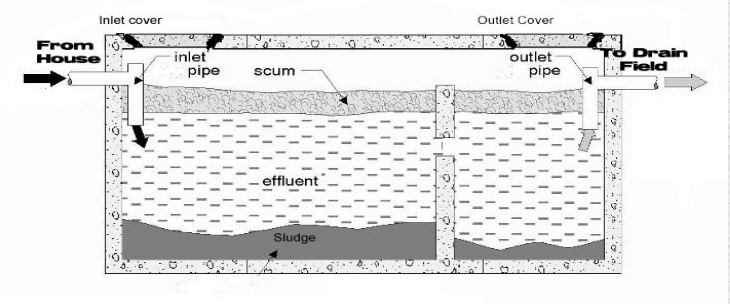Maintaining Septic Systems
Pumping your septic tank on a regular basis is the best way to maintain your onsite sewer system. Solids and sludge can build up preventing the flow of water to your drain field. What’s worse if left unattended, solids and sludge get into your drain field causing costly repairs in the thousands of dollars. When a septic system backs up into a house or business it is not a laughing matter. Water can damage flooring, cause sanitary nuisances, odors and health problems. Adding bacteria helps, but nothing takes the place of pumping your system on a regular basis. Systems vary, but the best rule of thumb is every two to three years.
Warning Signs of System Failure:
While proper use, inspections, and maintenance should prevent most septic tank problems, it is still important to be aware of changes in your septic system. Call us if you suspect your septic system may be going bad.
Here are some signs of septic system failure:
- Surfacing sewage
- Wet spots in the drain field area
- Sunken areas around or on septic system
- Plumbing or septic tank backups
- Slow draining fixtures; gurgling sounds in the plumbing system
- Sewage odors in the house or yard: House plumbing vents on the roof will emit odors and this is normal
Things to do Immediately
- Remove two way clean out and check water level
- Do not run laundry if tied to system
- Avoid excessive flushing and long showers
How to Save Your System:
- Aside from wastewater, do not flush disposable diapers, cigarette butts, sanitary products, paper towels or disposable wipes. Many things listed as septic tank safe are not.
- Avoid using the garbage disposal. Coffee grounds, food, grease, fat and other material is best disposed of in the garbage or compost pile.
- Reduce water consumption by repairing leaky faucets and toilets. Turn off water when brushing or shaving. Install low volume water fixtures.
- Add an outlet filter device!
Contact Us for a Free Estimate

Water and sewage comes from the house through the inlet pipe where bacteria help eliminate the solids. The lighter toilet paper, grease and waste products float to the top creating the scum layer. Heavier particles and bacteria waste fall to the bottom and compose the sludge layer. The Effluent, mostly water, travels through and enters the drain field where it filters into the ground. Inlet and outlet covers are provided for pumping and servicing the septic tank. Call Total Septic today to schedule your pump out!

